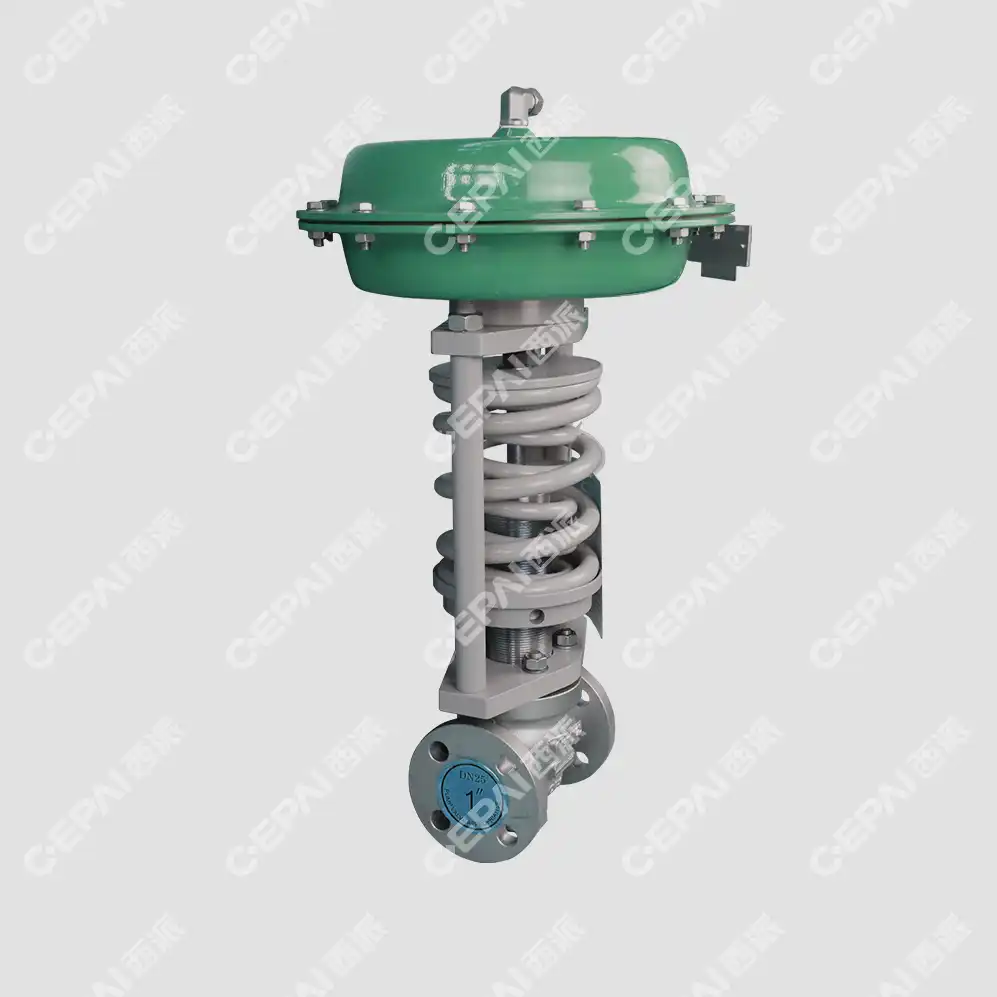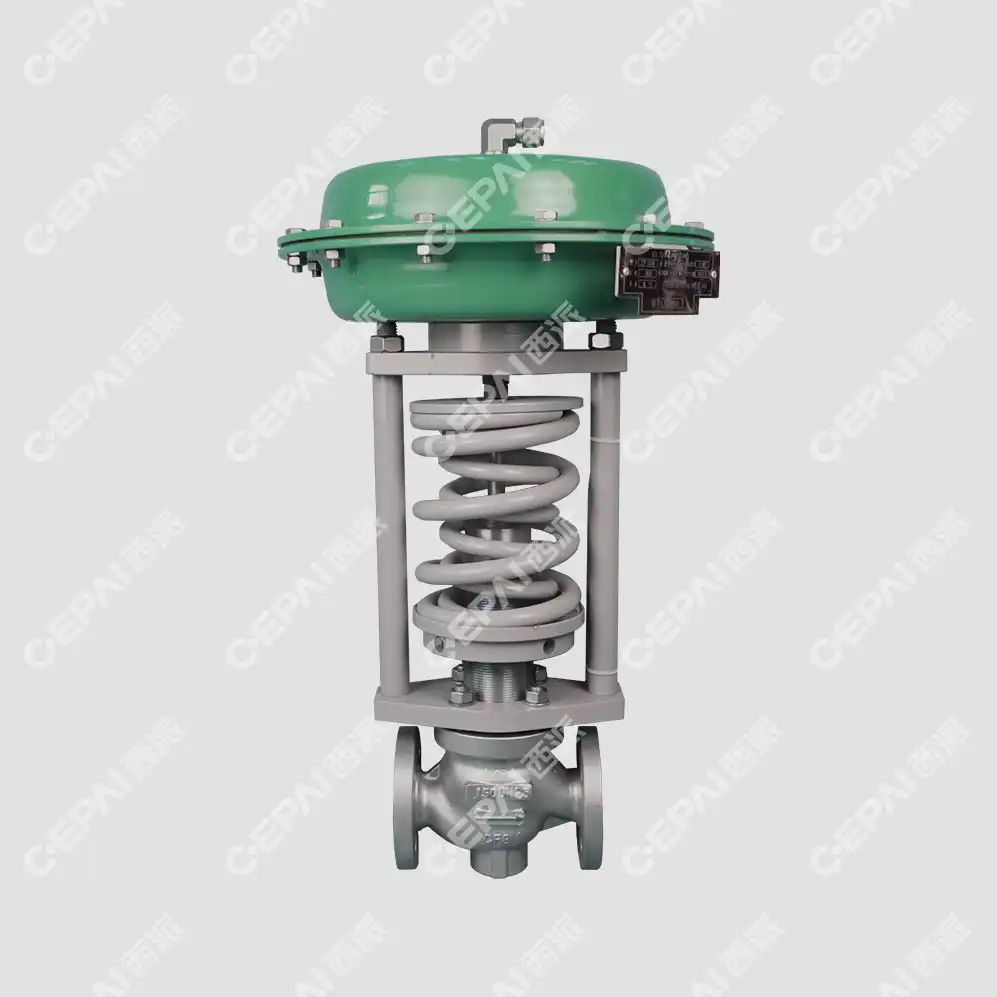Self-Operated vs Pilot-Operated Control Valves: What to Know
When selecting control valves for industrial process systems, understanding the fundamental differences between self-operated and pilot-operated configurations is crucial for optimal performance and cost-effectiveness. Self-operated control valves represent a sophisticated solution that harnesses the system's own fluid energy to regulate flow, pressure, and temperature parameters without requiring external power sources. These valves utilize advanced fluid dynamics principles to achieve precise control through internal mechanisms that respond directly to process conditions. In contrast, pilot-operated valves depend on external control signals and auxiliary systems to function effectively. The choice between these two technologies significantly impacts system reliability, maintenance requirements, energy consumption, and overall operational efficiency in various industrial applications.
Understanding Self-Operated Control Valve Technology
Fundamental Operating Principles and Mechanisms
Self-operated control valves function through ingenious engineering that converts the kinetic and potential energy present in the flowing fluid into mechanical force for valve actuation. The self-operated control valve design incorporates a sensing element that directly monitors process variables such as pressure, temperature, or flow rate, eliminating the need for external controllers or power supplies. This sensing element, typically a diaphragm, bellows, or thermal expansion device, mechanically connects to the valve trim assembly through a spring-loaded mechanism. When process conditions deviate from the setpoint, the sensing element experiences a force imbalance that directly translates into valve stem movement, automatically adjusting the flow area to restore equilibrium.The valve body construction in these systems employs straight-through ball valve configurations with nominal diameters ranging from DN15 to DN400mm, accommodating various pressure ratings including PN16, 40, 64, and ANSI standards of 150, 300, and 600. The materials typically include WCB, CF8, and CF8M for valve bodies, ensuring compatibility with diverse process fluids and operating conditions. The internal components feature single-seat plunger-type valve cores or sleeve valve cores manufactured from 304 or 316 stainless steel, providing excellent corrosion resistance and durability. These valves achieve rapid response characteristics, instantly reacting to fluid flow changes to maintain precise control parameters without external intervention.

Advanced Fluid Dynamics and Performance Characteristics
The self-operated control valve leverages sophisticated fluid dynamics principles to achieve superior performance in industrial applications. The valve's internal geometry creates specific pressure differentials that drive the actuation mechanism, utilizing the Bernoulli principle and momentum transfer to generate the necessary forces for valve positioning. This design philosophy enables the valve to maintain stable control even under varying upstream conditions, as the actuating force naturally adjusts proportionally to the process fluid energy.The flow characteristics of these valves demonstrate exceptional linearity and repeatability, with quick-opening adjustment characteristics that provide precise modulation across the entire operating range. The internal flow path minimizes turbulence and pressure losses, ensuring efficient energy transfer while maintaining smooth flow conditions. Advanced computational fluid dynamics modeling during the design phase optimizes the valve geometry to minimize cavitation, noise, and vibration, resulting in enhanced reliability and extended service life. The valve's inherent ability to respond instantaneously to process changes makes it particularly suitable for applications requiring frequent flow adjustments or rapid response to system disturbances.
Material Selection and Construction Standards
Material engineering plays a critical role in self-operated control valve performance and longevity. The valve components undergo rigorous material analysis and dimensional inspection according to relevant international standards, ensuring optimal compatibility with process conditions. The valve bodies utilize high-grade carbon steel (WCB) for standard applications, while stainless steel variants (CF8, CF8M) provide enhanced corrosion resistance for aggressive chemical environments. The selection criteria consider factors such as temperature range, pressure requirements, fluid compatibility, and environmental conditions.The packing systems employ PTFE fillers for standard applications operating between -5°C to +70°C, while flexible graphite fillers accommodate extended temperature ranges up to +250°C. This versatility enables the valves to function effectively across diverse industrial sectors, from petrochemical processing to power generation. The valve cover configurations include standard and extended types, with the latter incorporating thermal barriers for high-temperature applications. Quality management systems ensure strict adherence to ISO standards throughout the manufacturing process, with comprehensive testing protocols validating performance parameters before shipment.
Pilot-Operated Systems: Control and Complexity
External Control Integration and Signal Processing
Pilot-operated control valves represent a sophisticated approach to process control that relies on external control systems to provide actuation signals. Unlike self-operated control valves, these systems require continuous communication with process controllers, sensors, and actuators to maintain desired operating parameters. The pilot system typically consists of a primary sensing device, signal conditioning electronics, and a pneumatic or hydraulic actuator that responds to control signals. This configuration enables precise control over multiple variables simultaneously and allows for complex control algorithms that can anticipate process disturbances and implement predictive control strategies.The control architecture in pilot-operated systems often incorporates feedback loops, cascade control, and feedforward compensation to achieve superior performance in demanding applications. These systems excel in situations where process conditions change rapidly or where multiple control objectives must be balanced simultaneously. The external control system can integrate with plant-wide automation networks, enabling coordinated control strategies across entire process units. However, this sophistication comes at the cost of increased complexity, higher installation costs, and dependency on external power sources and control infrastructure.
Actuator Technologies and Response Characteristics
The actuator systems in pilot-operated valves encompass various technologies including pneumatic diaphragm actuators, piston actuators, and electric motor-driven assemblies. Each technology offers distinct advantages depending on the application requirements. Pneumatic diaphragm actuators provide reliable operation with excellent fail-safe characteristics, utilizing compressed air signals typically ranging from 3-15 PSI or 4-20 mA electronic signals converted to pneumatic pressure. The large diaphragm area generates substantial forces while maintaining sensitivity to small signal changes, enabling precise positioning control.Piston actuators offer higher force output in compact packages, making them suitable for high-pressure applications or large valve sizes where diaphragm actuators may be insufficient. The functional forms include both direct-acting (air-to-open) and reverse-acting (air-to-close) configurations, providing flexibility in fail-safe positioning. Response times in pilot-operated systems can be optimized through actuator sizing and signal conditioning, though they typically require longer settling times compared to self-operated control valves due to the signal processing and transmission delays inherent in external control loops.

Integration Challenges and System Dependencies
Pilot-operated valve systems introduce several integration challenges that must be carefully considered during system design and implementation. The dependency on external control systems creates potential failure points that can affect overall system reliability. Signal transmission lines, control power supplies, and electronic components all represent additional maintenance requirements and potential sources of system failure. Environmental factors such as electromagnetic interference, temperature fluctuations, and vibration can affect signal integrity and control precision.The integration process requires careful attention to signal compatibility, loop tuning, and system commissioning to achieve optimal performance. Control system programming must account for valve characteristics, process dynamics, and safety interlocks to ensure stable operation across all operating conditions. The complexity of these systems often necessitates specialized technical expertise for installation, commissioning, and ongoing maintenance, potentially increasing lifecycle costs compared to simpler self-operated control valve solutions.
Selection Criteria and Application Guidelines
Process Requirements and Operating Conditions
The selection between self-operated and pilot-operated control valves depends heavily on specific process requirements and operating conditions. Self-operated control valves excel in applications where simplicity, reliability, and energy efficiency are paramount concerns. These valves are particularly well-suited for processes with relatively stable operating conditions, where the control objective involves maintaining a single parameter such as pressure reduction, temperature control, or flow limitation. The inherent stability of self-operated systems makes them ideal for remote locations or applications where maintenance access is limited.The pressure ratings and temperature capabilities of self-operated control valves accommodate a wide range of industrial applications. With pressure ratings extending to ANSI 600 class and temperature capabilities reaching +250°C in extended configurations, these valves can handle demanding process conditions while maintaining reliable operation. The straight-through ball valve design minimizes pressure drop and provides excellent flow capacity, making them suitable for high-flow applications where energy efficiency is crucial. The quick-opening flow characteristics provide responsive control for applications requiring rapid adjustment to changing conditions.
Economic Considerations and Lifecycle Analysis
Economic factors play a significant role in valve selection decisions, encompassing initial capital costs, installation expenses, and long-term operational costs. Self-operated control valves typically offer lower initial costs due to their simpler construction and reduced system complexity. The elimination of external control systems, power supplies, and signal transmission infrastructure significantly reduces installation costs and commissioning time. The inherent reliability of self-operated systems translates to lower maintenance costs and reduced downtime, contributing to improved overall equipment effectiveness.Lifecycle cost analysis must consider energy consumption patterns, with self-operated control valves offering advantages in applications where external power is expensive or unreliable. The valves' ability to function indefinitely without external power sources provides operational continuity during power outages or control system failures. However, pilot-operated systems may offer economic advantages in applications requiring precise control of multiple variables or complex control strategies that can optimize overall process efficiency. The selection decision should include comprehensive evaluation of all cost factors throughout the expected equipment lifecycle.
Performance Optimization and Application Matching
Performance optimization requires careful matching of valve characteristics to specific application requirements. Self-operated control valves provide excellent performance in applications where the controlled variable directly relates to the actuating force, such as pressure regulation or temperature control using thermal expansion elements. The direct mechanical linkage between sensing and actuation provides inherently stable control without the potential for control loop instability that can affect pilot-operated systems.The response characteristics of self-operated control valves make them particularly suitable for applications requiring immediate response to process upsets or disturbances. The instantaneous nature of the mechanical response eliminates the delays associated with signal processing and transmission in pilot-operated systems. This characteristic is especially valuable in safety-critical applications where rapid response can prevent equipment damage or hazardous conditions. The robust construction and proven reliability of these valves make them suitable for continuous operation in demanding industrial environments where consistent performance is essential for process stability and product quality.
Conclusion
The choice between self-operated and pilot-operated control valves ultimately depends on specific application requirements, system complexity, and operational priorities. Self-operated control valves offer compelling advantages in terms of simplicity, reliability, and energy efficiency, making them ideal for many industrial applications where direct mechanical control provides adequate performance. Their inherent stability and minimal maintenance requirements contribute to reduced lifecycle costs and improved operational reliability, particularly in remote or challenging environments.
Ready to optimize your process control system with advanced valve technology? CEPAI Group combines exceptional durability with high-precision control performance, backed by extensive R&D investment and proven innovation achievements. Our comprehensive pre-sales technical consultation, customized solutions, and dedicated after-sales support ensure optimal valve selection and performance for your specific application. With ISO quality system certification and strict testing protocols guaranteeing zero defects, we provide first-class products and services at competitive prices. Contact our technical experts today to discuss your control valve requirements and discover how our advanced manufacturing capabilities can enhance your process efficiency and reliability.
Contact us: cepai@cepai.com
References
1. Smith, J.A., "Fundamentals of Process Control Valve Design and Application," Industrial Process Engineering Journal, Vol. 45, No. 3, 2023, pp. 78-95.
2. Johnson, M.R., and Williams, K.L., "Comparative Analysis of Self-Operated versus Pilot-Operated Control Systems in Petrochemical Applications," Chemical Engineering Progress, Vol. 119, No. 8, 2023, pp. 42-51.
3. Chen, L., "Advanced Materials and Manufacturing Techniques for High-Performance Control Valves," Materials Science and Engineering Review, Vol. 67, No. 2, 2024, pp. 156-174.
4. Anderson, P.K., "Energy Efficiency and Sustainability in Industrial Valve Applications," Process Industry Technology, Vol. 38, No. 6, 2023, pp. 23-35.
5. Thompson, R.D., "Reliability Engineering Principles for Critical Process Control Equipment Selection," Reliability Engineering and System Safety, Vol. 142, 2024, pp. 89-103.
6. Martinez, S.C., "Fluid Dynamics Optimization in Self-Actuated Control Valve Design," International Journal of Fluid Mechanics, Vol. 56, No. 4, 2023, pp. 201-218.

Get professional pre-sales technical consultation and valve selection services, customized solution services.

About CEPAI


